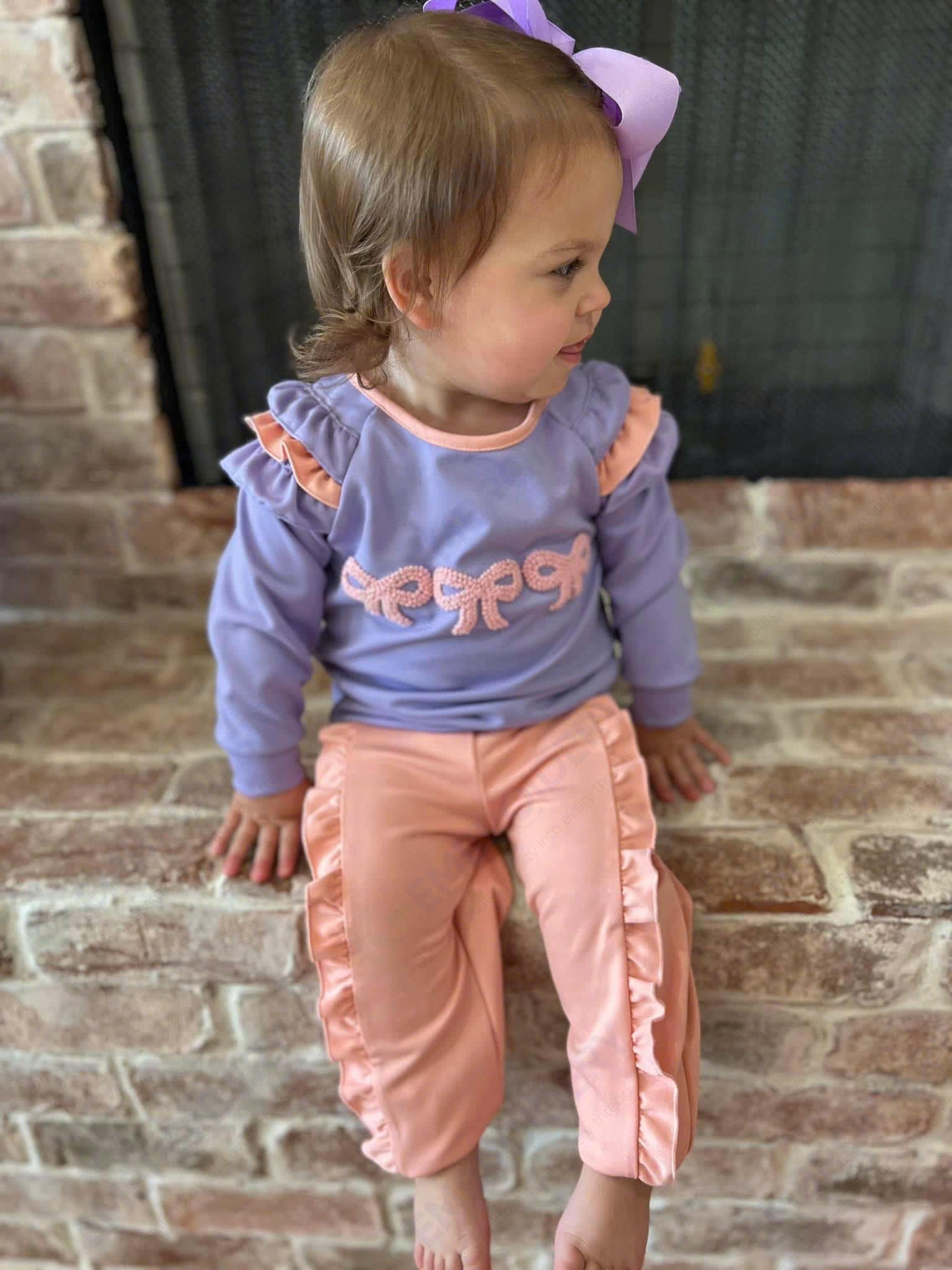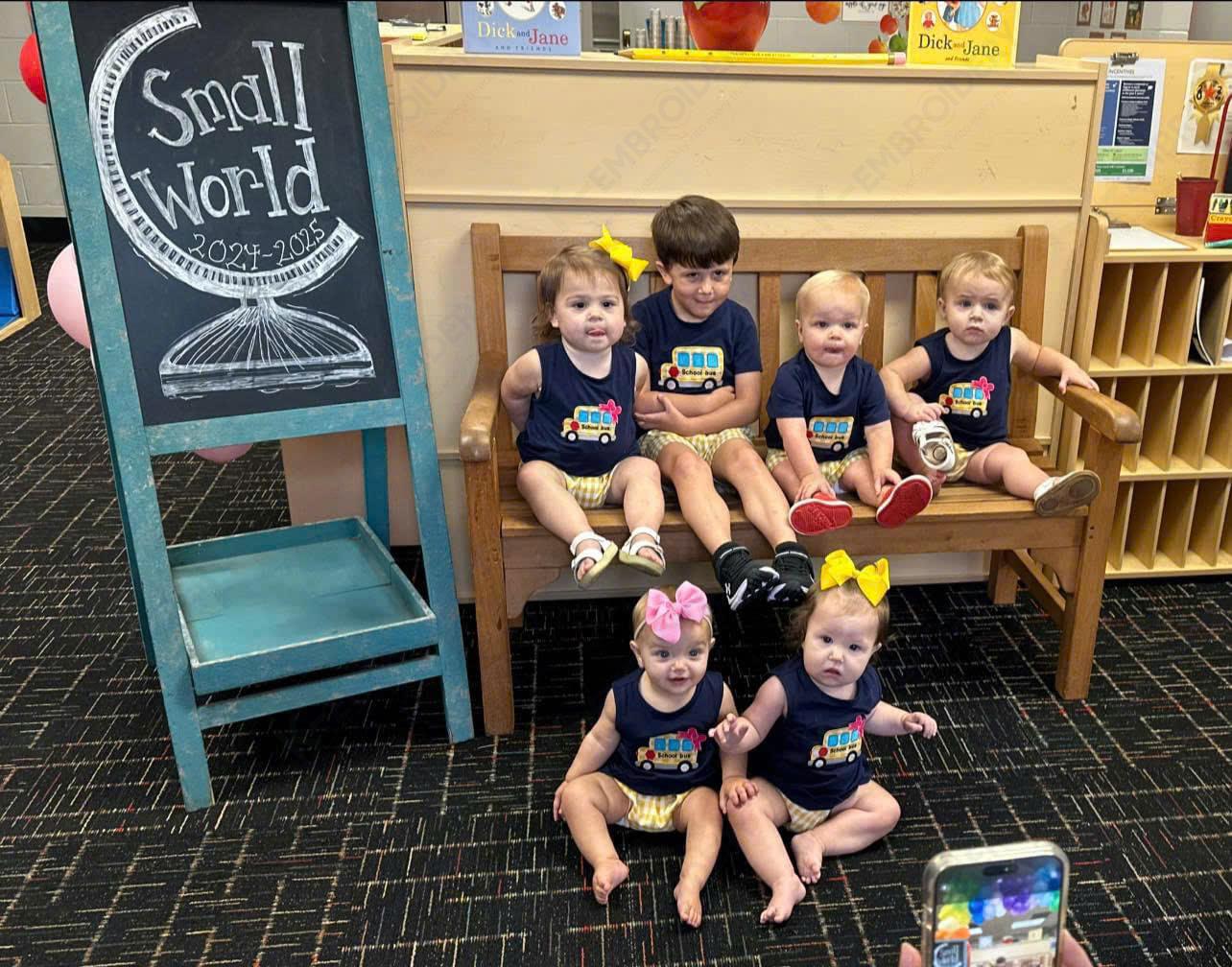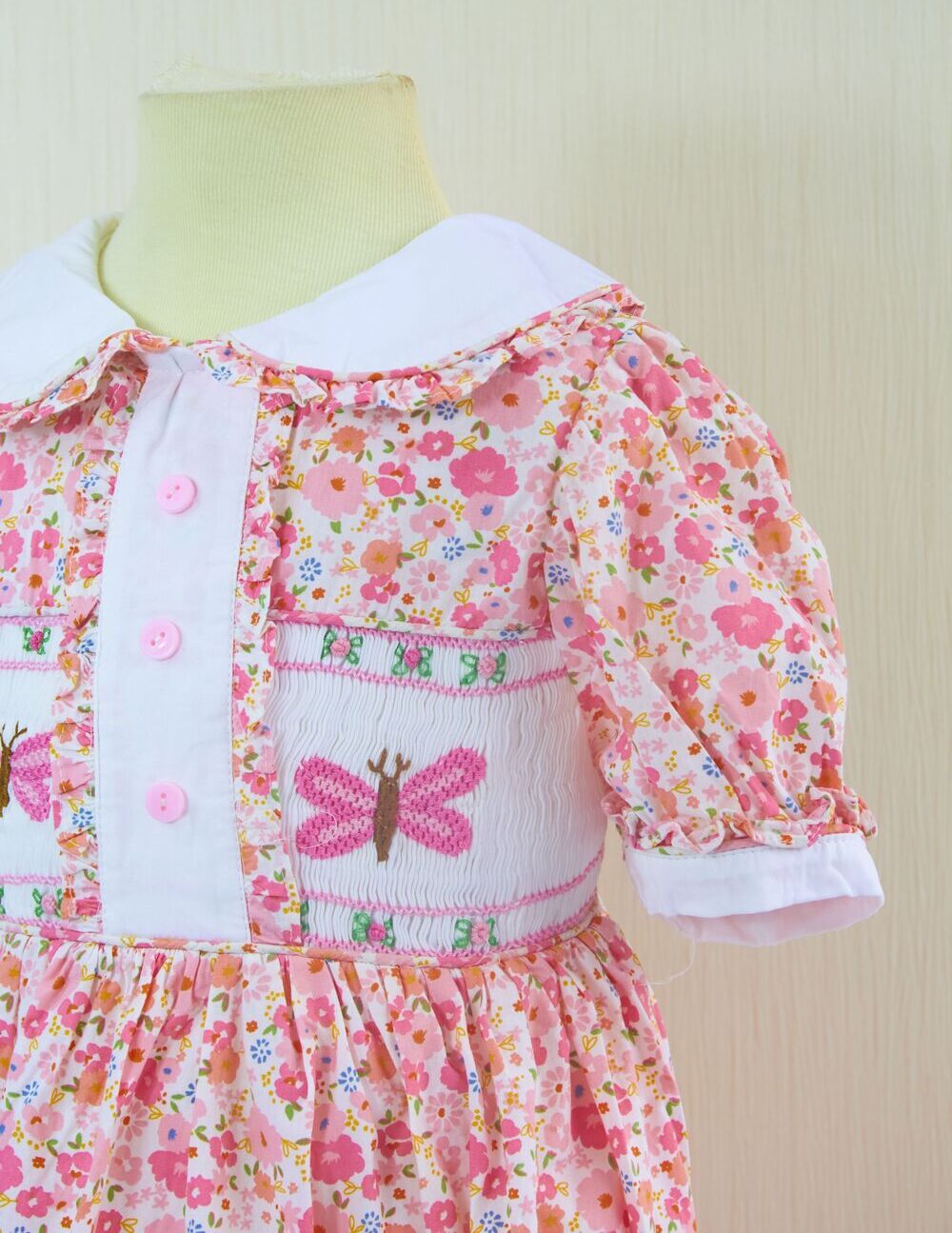How to Choose Safe Clothes for Your Little Baby
Did you know that clothing affects 28% of a baby’s health? Besides food and drinks, clothing should also be given special attention. Poor quality clothing not only harms the baby immediately, but it can gradually permeate over days and months and then incubate the disease.
When it comes to selecting clothes for your child, the fabric becomes a decisive factor in its utility. While dressing stylishly is important, safety and comfort are paramount, especially for infants. So how do you choose the safest fabric for your baby? Join K-Embroidery as we explore guidelines on selecting safe and comfortable clothing for your little one below.
1. Selecting High-Quality Fabrics
For newborns, their skin is very sensitive and requires special care. During this period, mothers should choose clothes for their newborns that are soft, gentle and absorb sweat well. For babies who are just starting to walk, prioritizing comfort in movement is very important, because their active nature often makes them sweat.
For tight-fitting pants, you should choose commercial pure cotton fabric, which is breathable and absorbs sweat well. Therefore, fabrics of natural origin, grown organically to minimize exposure to chemicals and optimize safety, will be the ideal choice for babies.
Studies have shown that organic cotton significantly reduces exposure to pesticides and toxic chemicals, protecting your baby’s sensitive skin from potential irritants and allergens. Moreover, bamboo fiber fabric offers hypoallergenic properties, providing a cool and gentle feel against the skin. Despite its higher price point, it’s an ideal option for children dealing with eczema or atopic dermatitis. It’s advisable to avoid woolen clothes for your child, as they can exacerbate eczema and irritate your baby’s sensitive skin further.

Currently, there are many suppliers on the market using low-quality fabrics to make a profit, leading to many children experiencing issues such as skin irritation, discomfort, and even allergic reactions.
Therefore, parents need to thoroughly research clothing factories before making purchases. They can do this by checking customer reviews and ratings online, asking for recommendations from friends or family members, and verifying if the manufacturer complies with safety and quality standards.
And this is when K-Embroidery shines as the top choice in Vietnam with:
- High quality materials: Commitment to using high quality fabric: cotton, linen or silk,… and elastic thread from Trung Dung Thread (Vietnam)
- Trendy, easy to do business: Costume products made by Vietnamese artisans are recognized worldwide and never go out of style.
- 100% hand-embroidery: Say no to poor quality machine embroidery, which is only suitable for simple patterns and is not very durable.
You can refer to some reviews about us here: K-Embroidery’s Feedback. What do these feedbacks have in common? They are real person and all come from abroad.
2. Avoiding Purchases of Uncertain Origin
The issue of purchasing items of uncertain origin has become a concerning issue in the children’s fashion industry. These products are often displayed for sale on sidewalks, in markets, where their sources and quality are frequently undisclosed. In fact, they are often imported from wholesale markets, where suppliers prioritize displaying and selling newly arrived batches without questioning the specific source or quality of the products.
Children’s clothing produced with unclear origins often come at a lower price compared to the general market. The main reason is the lower production costs due to not adhering to strict standards on labor, safety, and environment like in industrially developed countries. Manufacturers may try to cut costs by using cheaper raw materials or low-cost labor.

Clothing that lacks clear proof of origin typically hasn’t received safety evaluations. The chemicals commonly present in low-grade fabric fibers such as formaldehyde, azo dyes, or flame retardants can pose adverse effects on a child’s sensitive skin and respiratory system.
To be more careful, you can burn clothing threads to observe. The threads of pure cotton clothes have a burning paper smell when burned, their ash is white and will change as soon as you press hard with your fingers. Meanwhile, the threads of chemical fiber clothes, when burned, will regenerate into small black balls.
3. Choose clothes with labels
Choosing clothes with clear labels is paramount in ensuring the safety and quality of children’s clothing. When garments have comprehensive labeling, it provides vital information about the fabric composition, manufacturing processes, and any potential hazards associated with the product. This transparency allows parents to make informed decisions, selecting items that meet their standards for safety and quality.
All clothing products that meet quality standards have specific product labels attached. On the label are often printed quality indicators, technical requirements, manufacturer, instructions for use… By choosing products with labels, parents can be confident that clothing has undergone thorough testing and meets high quality standards, minimizing the risk of exposure to harmful substances, harmful chemicals or quality materials.
Products without safety labels are often products that do not meet export standards to developed countries with strict quality inspection processes such as the US and Japan.

4. Avoiding Vibrant-Colored Clothing.
Many mothers enjoy dressing their children in colorful outfits to enhance their adorable appearance. Additionally, there’s a longstanding belief that dressing children in vibrant colors invites good fortune and tranquility.
Yet, little do people know that dye colors can greatly affect the health, especially the delicate skin of babies, with more intense colors posing greater risks. Hence, experts recommend mothers to opt for white, beige, or pastel-colored garments to minimize the potential adverse effects of dyes.
5. Choosing the Right Size
Proper sizing is not merely about aesthetics but a fundamental aspect of your baby’s safety. Ill-fitting garments can impede your baby’s mobility and pose risks of entanglement or suffocation. At each age, children will wear clothes of different sizes. However, the rate of development in each child is different. Therefore, you should be careful when choosing large-sized clothes for children.
According to research conducted by the American Academy of Pediatrics, improperly sized clothing ranks among the leading causes of accidents among infants and toddlers. Prioritize garments that provide a snug yet comfortable fit, enhancing your baby’s freedom of movement and reducing the risk of accidents.

Additional Tips:
- Consider investing in garments featuring UV protection to shield your baby’s delicate skin from harmful sun rays.
- Opt for breathable fabrics such as organic cotton to regulate your baby’s body temperature and prevent overheating.
- Conduct regular inspections of your baby’s clothing for signs of wear and tear, promptly replacing items as needed to keep your babies safe.
Conclusion
In conclusion, ensuring the safety of your baby’s clothing is paramount for their well-being and comfort. By following the guidelines above, parents can make informed decisions when selecting clothes, prioritizing quality, comfort, and adherence to safety standards.


